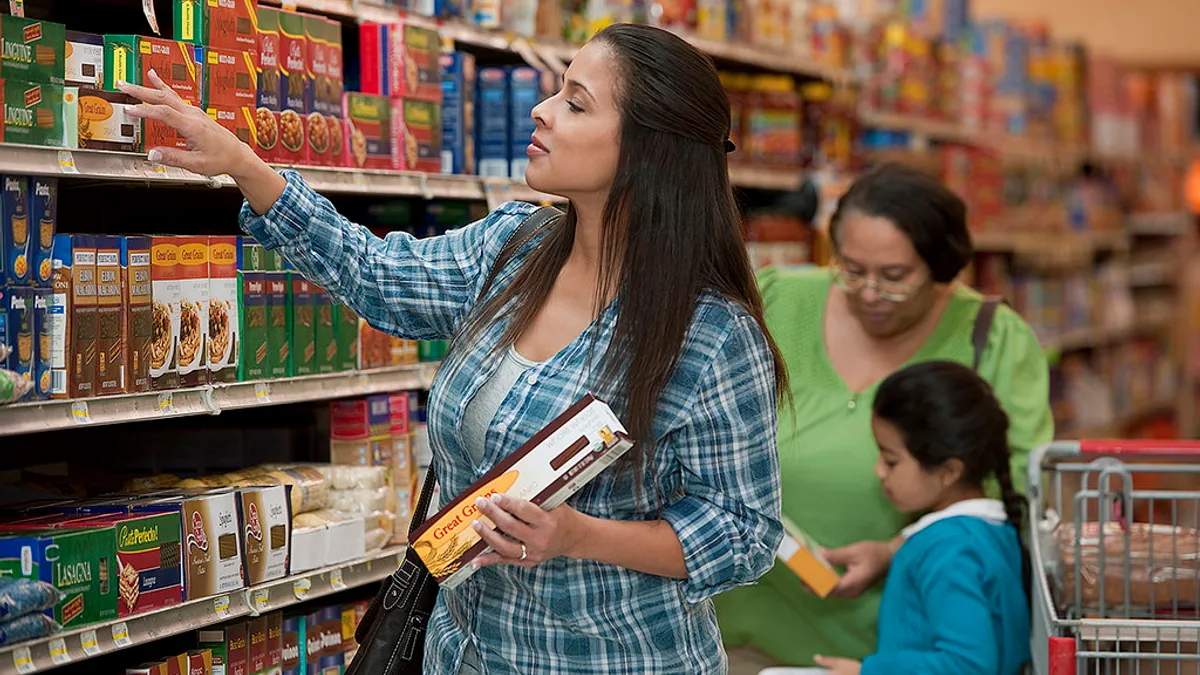Evan Magliocca is brand marketing manager for Baesman Insights & Marketing, a full-service agency that partners with retailers to create customer marketing, loyalty and CRM programs.
Grocery chains haven’t traditionally been quick to improve their customer experiences. After the introduction of the loyalty card more than 30 years ago, there weren’t many transformations in the ensuing years until Amazon entered the fray. And the biggest driver of change for brands is usually fear. Determined not to follow the same path as many apparel and electronics retailers who stood idle while Amazon expanded its reach, grocers across the country are introducing new experiences, technologies, and opportunities for customers to see more benefits from the typical grocery trip.
But while many retailers suddenly feel the need to innovate, they’re confronting a challenging consumer landscape. Shoppers have changed quite a bit in the last 10 years while grocers were seemingly asleep. Time is tighter, variety is wider, and globalism has opened eyes to new foods, products, and possibilities. The average customer wants to spend far less time on menial tasks than previous generations. It’s debatable if they actually have less time for those areas of their lives, but clearly newer generations have higher expectations for getting what they need quickly and moving to other things.
As grocers try to keep up with ever-evolving consumer demands, there are three areas where they’re investing that address demands for convenience, quality, and new experiences. Expanding and leveraging these investments intelligently will be key to grocers’ future success.
Grocery pickup
Ordering groceries online and picking them up at the store is an offering that has been around for some time, but few grocers have really invested in it until now. Those investments are changing customer mindset. According to a Nielsen study, 25% of grocery shoppers order products online and 55% are willing to buy online in the future. The experience, which capitalizes on grocers' established store presence, has been integrated well through company websites and apps to help customers pick their products on their own time without having to spend an hour or two in the store.
That’s perhaps one of the biggest differences between generations: the sporadic time and multitasking instead of focusing on one task at a time. The e-commerce grocery experience is designed for that, enabling customers to build out carts over time and spend as little time as possible at the physical store. It’s not surprising the Gen Z and millennials lead in grocery delivery and pickup, according to Nielsen.
Scan and go
The biggest grocery story nightmares for customers are long lines and getting stuck behind people with overflowing carts and hundreds of coupons. Skip-checkout apps are the answer to those problems. Customers have the option to pick up physical, portable scanners and to scan each item as they place them into their carts. It’s a bit tough with produce, as customers need to weigh each item on special scales, but ultimately it can save a lot of time at checkout since customers simply load their scanned totals to a kiosk, pay, and walk out the door. This year, Kroger rolled out nearly 400 Scan and Go locations across the U.S., showing that it can take a complex technology and bring it to the masses without barriers and hurdles.
It may not be as sleek and seamless as Amazon’s technology that enables users to simply grab items and walk out, but grocers have done a great job of taking that technology to scale to much larger store formats.
Making grocery shopping an experience
Grocers have taken too long to realize that food buying is an experience, much like going to a restaurant. They’ve been far too content with the idea that buying from a set list that’s rote and consistent every week is the status quo. Across categories, food has become extremely diverse — just look at your local grocer’s cheese section and find how many different countries and regions are represented. Bringing in such diversity to the shelves is an amazing feat.
Chains are finally capitalizing on that and not just with the average product sample. Many are now offering tasting events to help customers understand their products better. Some grocers have even gone a step further with full bars right in the store where customers can have a drink, try new food and alcohol, then walk five steps over and put those same products in their shopping carts.
Customers expect more from cable and content providers. They expect more from technologies and devices. Grocery is no different. Customers expect more than the typical, mundane experience. New omnichannel possibilities and in-store experiences are helping the industry evolve, but grocery chains can’t stop there; they need to keep investing in new ways to support and entice their customers.
If they won’t, Amazon will.












